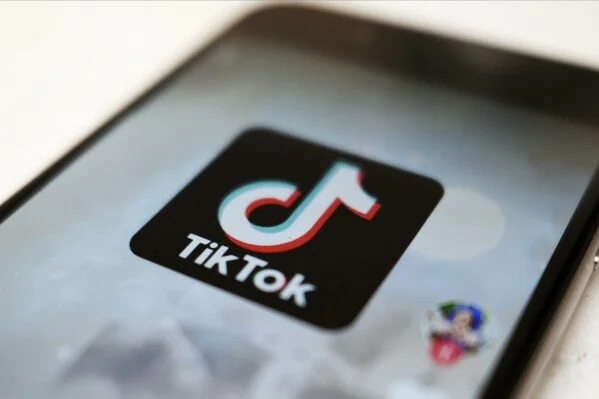Nihilism Begins on iPhone
Photo provided by The Associated Press.
Since the dawn of COVID-19, it's felt normal, if not implicit, to shut myself in a barbed wire box of nihilism.
Drown myself in negativism, let me complain, wrack my brain for misery. And, of course, this misery would be baseless without the support of a digital community.
Kids aged 10-19 make up over 60 percent of TikTok users. It is no surprise that in tandem with the rise of TikTok, the prominence of major depressive episodes in teens has also risen (Howarth, 2024)–with 13 percent of youth reporting at least one major depressive episode in the past year as of 2019, up 8 percent (or 2 million kids) from 2007 (Pew Research Center, 2019). Now, the rate of kids who have experienced a major depressive episode has climbed to 15 percent in 2022 (Mental Health America, 2022).
In the past year, I, like many young people, was persuaded to redownload TikTok–a platform notorious for the cult-like fads its algorithm seems to cultivate.
But a trend that previously drove me to delete the platform, omnipresent and detrimental, is depression. In an era marked by TikTok and COVID-19, many young women were not blind to the prevalence of eating disorder culture on the platform–videos that preached sleeping in until 2 p.m. to conveniently skip meals and the reign of obsessively completing those demonic Chloe Ting workouts.
TikTok has seemed to continuously toe the line of being a predominantly negative platform. It’s consistently a space for young people to share their worst inner thoughts and spread them among insecure youth–like STDs at a school that doesn’t provide condoms.
I’m sure many teens on the app are fine using it as a means of ignoring the world around them, engaging in silly little videos with potentially daunting undertones we can easily skim over and not spending the mental effort it takes to metacognitively evaluate the nihilism of the platform that may seep into ourselves.
It wasn’t until my recent redownload (which occurred in Nov., after a nearly two-year hiatus from the app) that I began to see TikTok as a source of positivity.
Since the dawn of the 2024 calendar year, TikTok seems to have embraced a new trend: #hopecore. The trend follows a formula similar to other variants of “core” content (notably #corecore–an odd amalgamation of comedic sporadic randomness). #hopecore entails upbeat compilations of tearfully joyful moments; video clips of pregnancy announcements, wedding speeches and police dogs receiving appreciation upon retirement–often enough to drive me to shedding happy tears if I’m caught at an emotional time.
After the emotional strenuousness of 2020, TikTok has been an outlet for sharing and spreading some of our deepest misery. But it is my hope that guerilla forces on social media like TikTok will turn the platforms over to positivism in 2024. Likewise, I pray that this plays a role in nurturing our next generation–who are just as (if not more) tech-addicted as us college kids, and more desperately contingent on social media as a prediction of their current and future mental well-being.
While many of the chronically online compile their “Ins and Outs” for 2024 (engagingly rambling lists of what’s trendy, and what’s no longer relevant for the coming year) I decree nihilism: out.
